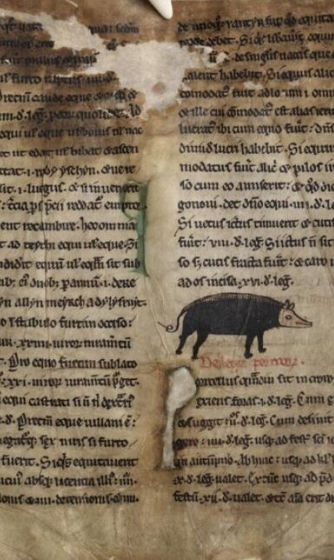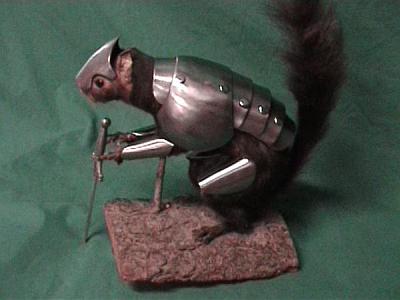Researchers point out that the 'medieval pig' represented in the game looks wrong

Set in 9th-century Europe, where Viking invasions flourished, as well as an open-world historical drama action-adventure '
What's wrong with medieval pigs in videogames? - Leiden Medievalists Blog
https://www.leidenmedievalistsblog.nl/articles/whats-wrong-with-medieval-pigs-in-videogames
Games set in medieval Europe include the urban development simulation game Foundation , the survival game Medieval Dynasty , the action RPG Assassin's Creed Valhalla, and A Plague Tale: A Plague Tale: set in 14th century France. There are various titles such as Innocence . In these games, pigs are modeled after 'modern pigs'. In other words, pigs are drawn as animals characterized by `` pink skin with little hair '' and `` thick and plump body shape ''. But medieval pigs didn't look like this, Kerkhoff points out.
Below is a pig that appears in 'A Plague Tale: Innocence' set in France in the 14th century. Similar to modern pigs, they have a familiar body shape with a plump body and short legs.

Examining medieval encyclopedias and fossils shows that pigs at that time were smaller creatures than today, with characteristics such as 'long noses', 'thin bodies' and 'long legs'. The back was arched, and unlike modern pigs, it had long, curved fangs. Most notably, medieval pigs did not have pink, hairless skin. Pigs at that time were covered with long black hair, so it seems that they looked quite similar to wild boars.
The image below is an illustration of a pig drawn around 1600, that is, after the Middle Ages. Looking at this, you can see that pigs after the Middle Ages also had 'long noses', 'skinny bodies', 'long legs' and 'long black hair'.

“In the game, medieval pigs roll around in pigsties and walk through village streets,” says Kerckhoff. In December, some of the fattened pigs from the fall harvest were slaughtered for meat and bacon. It was called '
Information about pig breeding in the Middle Ages is featured prominently in European legal codes of the early Middle Ages. The code contains ample information on 'how pigs were raised at the time' and 'how pigs were valued in rural communities before 1100 AD'.
For example, a code compiled by the Merovingian dynasty in the 6th century states that 'a matriarch would graze between 25 and 50 sows, and watch over the pigs while they graze.' It can be seen that piggeries at that time were able to receive the same legal protection as blacksmiths.
Furthermore, it seems that most of the laws that existed in the early Middle Ages were made on the premise of forest grazing customs. For example, Merovingian law said that 'a swineherd is free to pass through forest paths', and medieval Longobardi said that 'it was a crime to feed pigs in someone else's forest'. rice field. Also, under Anglo-Saxon law, cutting down trees to protect pigs was sometimes subject to twice the fines as cutting down trees for other purposes.

In addition, in Wales in the Middle Ages, there is a detailed description of compensation when pigs are stolen, 'This is a reference to know how pigs were evaluated by type at that time,' Associate Professor Kerkhoff wrote down. Also, at that time, the pigs for breeding were shared by the village unit, so if they were stolen, the highest compensation would be paid. The law of the Merovingian dynasty also has a description of pig theft, and there is a description of ``compensation for theft of castrated boar'', which is rarely found in other laws.
This does not mean, then, that there were no pigs around farms in Medieval Europe.In the early Middle Ages, breeding sows and piglets were placed near farms in corrals that could be locked. They were kept in cages where they could. The piglets were slowly raised here for three years, after which they joined grazing groups in forests and fallow lands. Also, since the early Middle Ages, after the forest available for grazing for pigs has decreased, it seems that pigs have increasingly been raised around villages. However, Associate Professor Kerkhoff says that the image that ``medieval pigs were treated as agricultural animals'' is wrong because the pannage that appeared in the Middle Ages in many parts of Europe remained until the present day.
Associate Professor Kerkhoff said, ``What would you need to change in order to accurately represent the medieval pig in the game? Games that can animate even fantastical animals are the perfect medium to break down stereotypes and provide academic insight to many people. In 2019, game developers may start showing small, shaggy pigs roaming happily in titles set in the Middle Ages.'
Related Posts:







